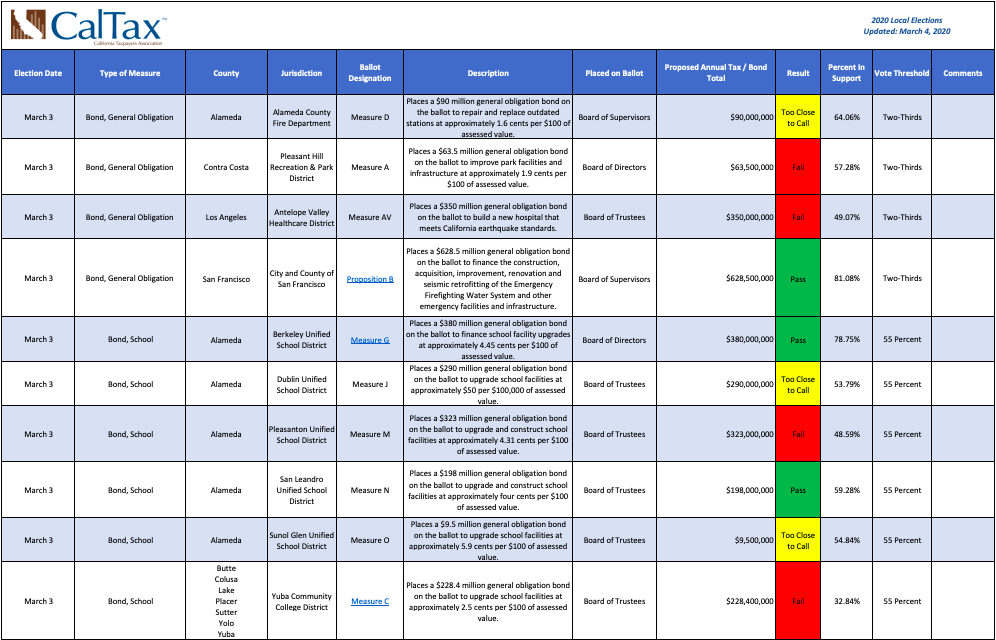
Braying donkey. (Photo: youtube)
Fighting the One-Party State at the Local Level in California
The litany of one-party state failure is endless
By Edward Ring, February 11, 2020 7:23 am
The one-party state has made life in California unaffordable and unfair, and the political system is rigged.
But there are ways to fight back.
It isn’t a partisan observation to say that California is a one-party state. It’s just stating a fact. The Democratic Party controls all the levers of political power in California.
Consider the evidence: GOP registration is down to 23 percent of registered voters. There is a Democratic “mega-majority” (75% or more) in both chambers of the state legislature. The GOP only holds 7 out of 53 congressional seats. Democrats occupy every state office from Governor on down. The GOP hasn’t elected a U.S. Senator to represent California since 1988. Democrats control the city councils and boards of supervisors in almost every city and county.
There are roughly 10,000 elected positions in California, from school boards to utility commissions and special districts, and Democrats run candidates and have professional funded campaigns for all of them, all the time.
The reasons that California is a one-party state are also not hard to understand. For this as well, the evidence is overwhelming. Virtually every financial special interest in California supports Democrats. Public sector unions, which are almost exclusively supportive of Democratic candidates and causes, collect and spend $800 million per year. California’s high tech industry, commanding mind-blowing wealth, is solidly Democratic. California’s wealthy and influential entertainment industry is solidly Democratic.
The media establishment in California is also solidly Democratic, wielding priceless influence over voters. And as if that weren’t enough, politically active billionaires spend amazing sums of money in California to support Democrats.
It takes BIG money to control California politics, and the Democrats have it: California’s own Tom Steyer spent $45 million on CA ballot measures in 2012 and 2016. Steyer spent $60 million on U.S. congressional races in 2018, including several in California. New Yorker Michael Bloomberg spent an estimated 80 million on 24 battleground congressional races, and won 21 of them – including 3 in California. These and other major donors coordinated efforts with PACs supported by public sector unions to flip seven congressional seats in California in 2018 and increase their majorities in both chambers of the state legislature.
It takes hundreds of millions per year to win in California; the Democrats always have that kind of money, and the Republicans never do.
Millions of these people still live in California, and all of them want to do something to save their state.
Californians Want New Ideas
A critical mass of Californians are realizing Democrats have failed them, and this, too, is not a partisan observation. There is ample evidence of how one-party rule has failed. There are now more than 160,000 homeless living in permanent encampments on the streets of California”s cities. Among these unfortunate individuals are drug addicts, alcoholics, mentally ill, and criminals. Some of them urgently need help, others need to be incarcerated, but permissive laws and unrealistic regulations prevent action.
Instead, voters are conned into paying for “affordable” public housing that costs, on average, over $500,000 per unit. The cost to build houses is prohibitive because of expensive permits (and endless delays in getting them), excessive fees, and a shortage of land where no shortage ought to exist because of “greenbelts.”
The litany of one-party state failure is endless.
Taxpayers fund expansion of light rail despite low ridership, instead of upgrading California’s roads and freeways.
Californians pay among the highest prices in the nation for gasoline, electricity, and natural gas. Californians endure water rationing because the one-party state won’t make effective investments in infrastructure.
Californians are driven from their homes and some of them are killed because of wildfires caused by the one-party state’s negligence and misguided regulations, not “climate change.”
Californians are forced to send their children to failing K-12 public schools, and when it’s time to send them to college, they will face an unaffordable tuition burden in order to pay for the population explosion of non-teaching administrators.
The one-party state has made life in California unaffordable and unfair, and the political system is rigged. But there are ways to fight back. Regardless of party affiliation, local elected officials, and citizens through the initiative process, can pass measures that have broad populist appeal.
Here are examples of nonpartisan reform that are feasible at the local level:
Examples of Local Government Reforms
(1) Curb Corporate Cronyism: One way to get at this is via a “Fairness in Business” ordinance. The city council in Yorba Linda recently approved this ordinance, which “shall prohibit any subsidy or business incentive from being provided to one business for their gain without the same subsidy or business incentive being given to all businesses.”
(2) Attack Corporate Welfare: A related measure could attack corporate welfare via a “Taxpayer Protection Resolution.” This measure would use the gift clause in the California constitution as the legal basis to minimize if not eliminate tax incentives and subsidies. The operative language would be “Government shall not expend, loan, or allow the use of public resources, nor use its taxing power, in aid of any individual, association, corporation, or other private party, unless such expenditure, loan, or use is for a public purpose, supported by consideration, and over which the public entity exercises continuing control.”
(3) Form an Independent Fire Department: California’s cities can emulate the experience of Placentia, which withdrew from the Orange County Fire Authority, with OCFA scheduled to be effectively replaced by mid 2020. According to Voice of OC, Placentia expects to save $28 million over the next 10 years by forming its own fire department and privatizing the paramedics services. Restoring local control over firefighting and emergency response services offers a huge opportunity to right-size pay, benefits, and work rules that have been a major factor in crowding out other services in California’s cities.
(4) Require Transparency in Local Government: Adopt a “Civic Openness in Negotiations” ordinance. Several California cities have passed ordinances that are helpful during negotiations with public employee unions to adopt or renew labor agreements. Key elements of COIN ordinances are the following: require an independent contract negotiator and an independent contract auditor, require public disclosure of offers and counteroffers, require elected officials to disclose all relevant communications, and allow for public disclosure and time for comments prior to final contract approval. Why hasn’t this always been the law?
(5) Get Retiree Health Insurance Spending Under Control: Right-size retired employee health insurance subsidies. In 2015 the City of Glendale decided to no longer guarantee that retirees would pay no more than active employees for their health insurance, by no longer subsidizing the higher premiums that typically apply with older participants. As noted in Glendale’s 2017 Annual Financial Report: “In October 2015, the City Council approved unblending medical insurance premium rates between active employees and retired employees effective June 1, 2016. Accordingly, City’s actuarial liability decreased from $214 million as of 6/30/2013 to $16 million as of 6/30/2016.
(6) Keep Taxpayer Funds Out of Political Advocacy: Regulate use of city or county expenditures on “public information campaigns.” California’s public officials have sought to raise local taxes and fees through “information” campaigns designed to appeal to local voters. These are thinly veiled, barely legal forms of political campaigning. Make them explicitly illegal, through a measure that states, among other things: “This city/county will not use public money – either internally, through its own staff and treasury, or externally, through the hiring or use of outside vendors – to engage in public education; public opinion polling or studies; or communications intended or may seem to be intended to determine the outcome of political campaigns.”
(7) Pension Reform: Two major cities enacted pension reform in the past decade, San Jose, and San Diego. Both of these reforms were relentlessly attacked in court by attorneys representing public sector unions, but significant reform elements remained in effect. Some of the key reforms include: Restrict what qualifies as pension eligible compensation. Move new employees onto 401K plans. Set a maximum percent-of-salary limit on city contributions to pensions. Change age of eligibility for pension benefits. Reduce maximum allowable cost of living adjustments to retiree pensions. Cap amount of pension eligible final salary. Assign “disability” retirement awards to independent panel. Discontinue “supplemental” pension payments to retirees.
Using the Initiative Process to Enact Local Reforms
While a city council of county board of supervisors can enact local political reforms, the initiative process offers a method to bypass the local elected officials. Getting a measure onto local ballots in California is still a fairly straightforward process.
Local Initiative Process:
- Draft ballot measure and submit to City Attorney
- Verify signature petition meets state and local legal requirements
- Publish legal ad within 10 days of receiving title & summary
- Gather signatures – typically 10 percent of registered voters
- Collect 50 percent more signatures than you need (15 percent)
- Submit signed petitions within 180 days of getting title & summary
- City has 30 business days to verify signatures
- If City doesn’t enact measure, it goes before voters in next election
While all of the already listed reforms can be enacted by a governing body or by a vote of local residents, doing it by initiative actually has some advantages. Most notable, a citizen’s initiative cannot typically be overturned by a city council or board of supervisors, it can only be repealed by holding a referendum asking voters to repeal what they’d previously approved. Since the one-party state can almost always retake control of a city council or county board of supervisors where the political reformers temporarily gained a majority, the initiative route implements a solution that can be more durable and lasting.
The following examples of political reforms via the local initiative process are actually being tried in California. In North Los Angeles County, a group of volunteer activists have placed several ballot measures before voters that if approved would repeal various local tax increases, usually utility taxes. In Oxnard, a group of volunteer activists are attempting to place a slate of linked initiatives on their local ballot, a tactic which makes sweeping changes possible in one election cycle.
(1) Repeal Local Tax Increases: Sample language can be quite simple, as shown by this example from a repeal measure placed on the April 2018 ballot in Sierra Madre: “Shall the City of Sierra Madre adopt a measure repealing the City’s Utility Users Tax in its entirety?” Political reformers who succeed in getting these proposals onto local ballots should prepare for a creative counterattack in the form of an “Advisory Measure” placed adjacent to the repeal on the ballot, asking voters “if the tax repeal passes, should the City Council eliminate paramedic services, reduce and outsource police services and library services, reduce code enforcement, and fire suppression service…”
(2) Place several reforms on the ballot at once, such as was attempted in Oxnard with the following five ballot measures: Fiscal Transparency and Accountability Act, which would make the city treasurer, an elected official, the head of the finance department. Keeping the Promise for Streets Act, which would deny the city certain sales tax revenue if it fails to maintain streets to specific levels. Term Limits Act, which would limit the mayor and council members to no more than two consecutive four-year terms. Open Meetings Act, which would require city meetings to begin no earlier than 5 p.m. and allow public speakers no less than three minutes to comment. Permit Simplicity Act, which would reform the permitting system with training, new guidelines and an auditing process that would lead an applicant to obtain a permit in one business day.
Other Ways to Fight for Nonpartisan Political Reform in California
To state the obvious, it is impossible to provide a comprehensive list of political reforms that can be enacted at the local level in California. A few additional noteworthy items are: reform the binding arbitration process, resist the ongoing assault on charter schools, defend the right of public employers to speak openly to employees about the costs and benefits of union membership, fight to enforce the Janus decision, and raise public awareness about the harm government unions are doing to our democracy.
The political landscape in California, unfortunately, cannot be significantly changed without state legislation or state ballot initiatives. Absolutely crippling, cruel legislation passed in Sacramento by the uni-party has brought California to the brink of becoming a feudal state, and only statewide rolling back of these laws will result in dramatic change. But citizens initiatives that work at the local level can also work at the state level. It just takes a lot more signatures to get it done.
State Initiative Process:
- Draft ballot measure and submit to Attorney General
- Get title & summary, begin signature gathering period
- File petition with election officials in all 59 counties
- Statute or referendum 5% (623,212), amendment 8% (997,139), of votes cast for governor in most recent election
- Collect 30-50 percent more signatures than you need
- Submit signed petitions within 180 days of getting title & summary – must be submitted by county
- Petitions must be submitted six months prior to November election
This is a daunting undertaking, which is why most state ballot initiatives require millions in funding to pay for professional signature gatherers, attorneys and consultants. And then, if the initiative is qualified for the state ballot, additional tens of millions must be spent to run a campaign in a state with 20 million registered voters, spanning seven major television media markets.
There are exciting new ways these costs can be driven way down, way down, by using the latest online technologies and by viral networking of disgruntled, disenfranchised activists. Millions of these people still live in California, and all of them want to do something to save their state. But a good first start for reformers is to attack on the local level, where they have a chance to marshal sufficient forces to prevail.
- Ringside: Will the Delta Pumps Operate at Capacity this Winter? - December 18, 2025
- Ringside: Will Advocates for More Water Supply Projects Find Unity? - December 11, 2025
- Ringside: EVs and California’s Future Demand for Electricity - December 4, 2025





Easy way to influence…own the education issue and the road traffic nightmare. Both failures and heavily impact all.
California is doomed and it will only get worse as corruption and the state budget spiral out of control. There is no end to wasteful spending by this so called governor who does as he dam well pleases. For those who can afford to leave the State now will only increase the tax burden on those of us who remain.
We’ve got to hang in there, if we can, John. This is a GREAT state, even though our so-called leaders (the left-leaning and Rhino-types, anyway) have abandoned us for their local-dollar-to-world-power gambit.
One major cause in electing only democrats that you didn’t mention is our open primary system.
I believe this was the start of our problems.
This is a great piece of journalism that I would have been thrilled to write. I just wish the Republican
Party of California heeds Mr. Ring’s advice to make the conservative perspective relevant at the ballot box once again.
Great ideas- I tried to affect change by running for City Council and my friend Judge Quentin Kopp endorsed and warned me about the need for a decent war chest. My competitors who won outspent me 5 times over all with union backing.
I recently moved to a new county and discovered the respective Supervisor is on his 3rd or 4th term and the Democratic Candidate for State Senate in district 9 is running unoppposed…may be time to do something about that!